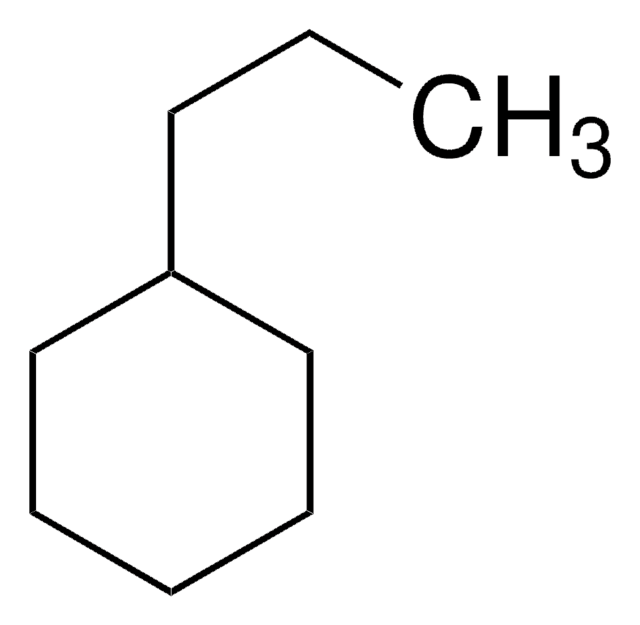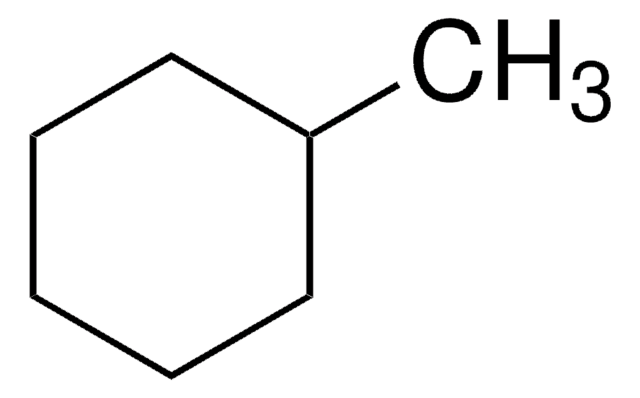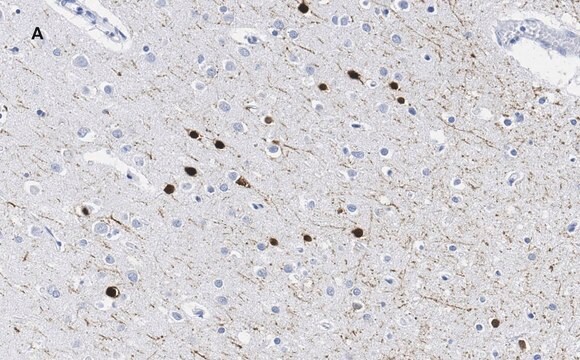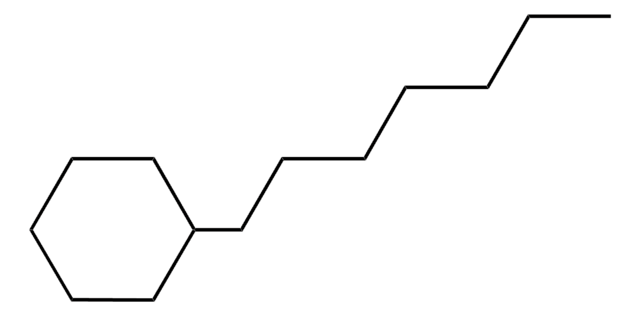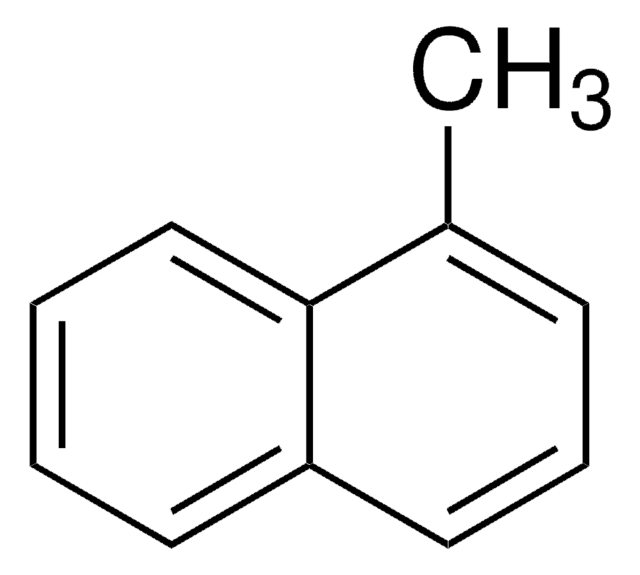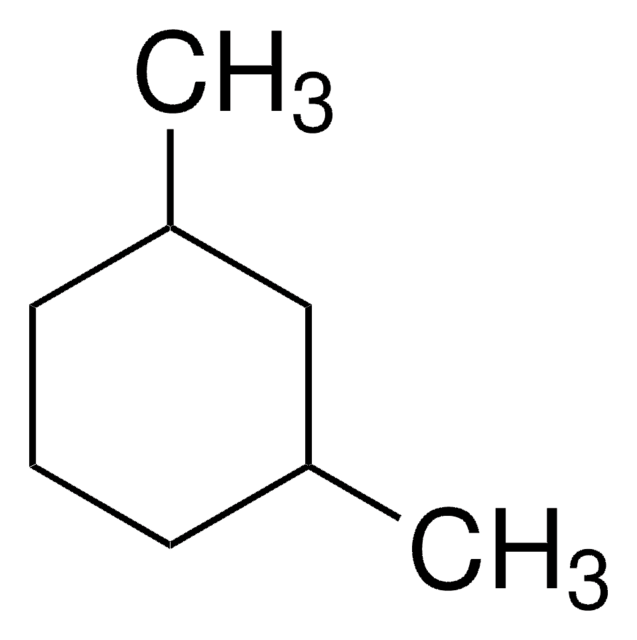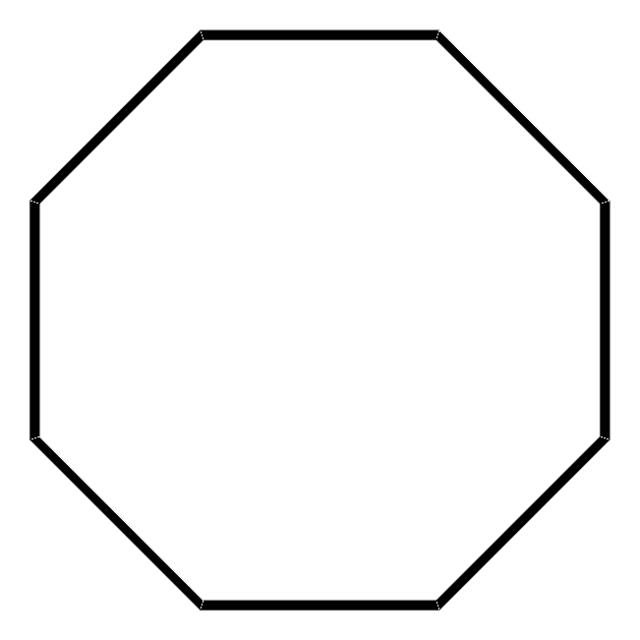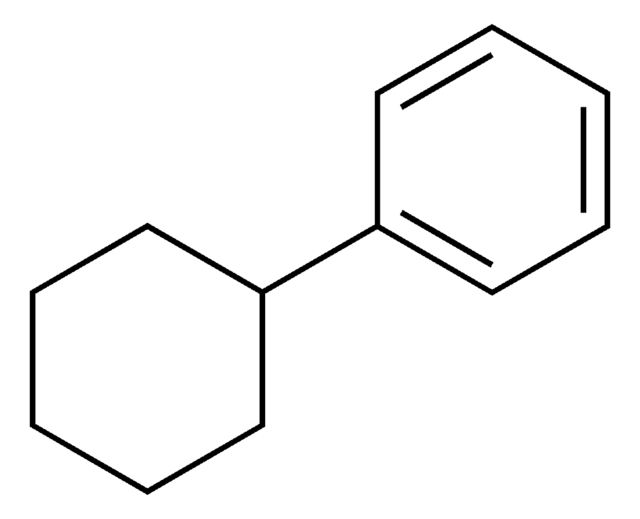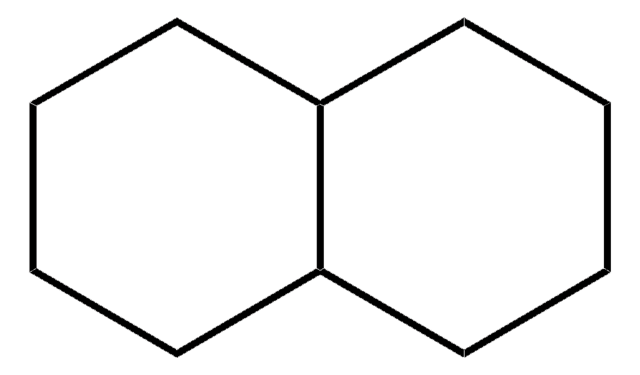110388
Butylcyclohexane
≥99%
Sinonimo/i:
1-Cyclohexylbutane
About This Item
Prodotti consigliati
Tensione di vapore
2.9 mmHg ( 37.7 °C)
Livello qualitativo
Saggio
≥99%
Temp. autoaccensione
475 °F
Indice di rifrazione
n20/D 1.441 (lit.)
P. eboll.
178-180 °C (lit.)
Punto di fusione
−78 °C (lit.)
Densità
0.818 g/mL at 25 °C (lit.)
Stringa SMILE
CCCCC1CCCCC1
InChI
1S/C10H20/c1-2-3-7-10-8-5-4-6-9-10/h10H,2-9H2,1H3
GGBJHURWWWLEQH-UHFFFAOYSA-N
Informazioni sul gene
human ... CYP1A2(1544)
Cerchi prodotti simili? Visita Guida al confronto tra prodotti
Descrizione generale
Avvertenze
Warning
Indicazioni di pericolo
Classi di pericolo
Flam. Liq. 3
Codice della classe di stoccaggio
3 - Flammable liquids
Classe di pericolosità dell'acqua (WGK)
WGK 3
Punto d’infiammabilità (°F)
105.8 °F - closed cup
Punto d’infiammabilità (°C)
41 °C - closed cup
Dispositivi di protezione individuale
Eyeshields, Faceshields, Gloves, type ABEK (EN14387) respirator filter
Scegli una delle versioni più recenti:
Possiedi già questo prodotto?
I documenti relativi ai prodotti acquistati recentemente sono disponibili nell’Archivio dei documenti.
I clienti hanno visto anche
Protocolli
-Xylene; Nonane; Decane; 1,2,4-Trimethylbenzene; Butylcyclohexane; Naphthalene
Il team dei nostri ricercatori vanta grande esperienza in tutte le aree della ricerca quali Life Science, scienza dei materiali, sintesi chimica, cromatografia, discipline analitiche, ecc..
Contatta l'Assistenza Tecnica.